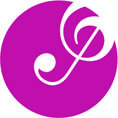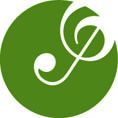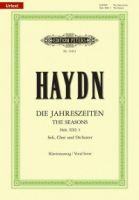Haydn The Seasons
.jpg) Vocal Scores for Haydn's The Seasons
Vocal Scores for Haydn's The Seasons
The Seasons (German: Die Jahreszeiten) is an oratorio by Joseph Haydn (H. 21/3).
The most popular vocal scores for Haydn's The Seasons are shown below.
Rehearsal recordings to help learn your voice part (Soprano, Alto, Tenor, Bass) are described below.
Full video version to hear the work in full is also below
The Novello edition of Haydn's The Seasons is in English and German for SATB and solo.
.jpg)
Catalogue Number: NOV072493
ISBN: 9780711984646
Please click here if you wish to order and further vocal score information
Please order by 3pm to be despatched today




The Edition Peters of Haydn's The Seasons is in English and German for SATB

Catalogue Number: EP11031
ISMN: 9790014109394
Please click here if you wish to order and further vocal score information
Please order by 3pm to be despatched today




Haydn was led to write The Seasons by the great success of his previous oratorio The Creation (1798), which had become very popular and was in the course of being performed all over Europe. The libretto for The Seasons was provided to Haydn, just as with The Creation, by Baron Gottfried van Swieten, an Austrian nobleman who had also exercised an important influence on the career of Mozart. Van Swieten's libretto was his own rendering into German of extracts from the long English poem "The Seasons" by James Thomson (1700-1748), which had been published in 1730.
The composition process was arduous for Haydn, in part because his health was gradually failing and partly because Haydn found van Swieten's libretto to be rather taxing. Haydn took two years to complete the work.
The premiere, in Vienna on April 24, 1801, was considered a clear success, but not a success comparable to that of The Creation. In fact, this has been the critical verdict on The Seasons ever since, and to this day it is performed considerably less often than the earlier oratorio.
It is widely felt that the blame lies not with Haydn, who remained at the height of his powers musically, but with the libretto. Oratorios typically are written on weighty subjects, such as episodes and characters from the Christian religion or heroes of classical mythology, but the libretto of The Seasons is mostly about the weather and about everyday life. The stirring final solo and chorus, which take up weightier matters (the meaning of life, the last trumpet, the eternal afterlife), might be taken to show what a remarkable work Haydn could have composed had he had access to a more serious libretto.
Like The Creation, The Seasons is a bilingual work. Since Haydn was very popular in England (particularly following his visits there in 1791-2 and 1794-5), he wished the work to be performable in English as well as German. Van Swieten therefore retranslated the Thomson original back into English, fitting it to the rhythm of the music. The resulting English text has not always proven satisfying to listeners; for example, one critic writes, "Clinging to [the] retranslation, however, is the heavy-handed imagery of Haydn's sincere, if officious, patron. Gone is the bloom of Thomson's original."
The Seasons is written for a fairly large late-Classical orchestra, a chorus singing mostly in four parts, and three vocal soloists, representing archetypal country folk: Simon (bass), Lucas (tenor), and Hanne (soprano). The solo voices are thus the same three as in The Creation.
The orchestral parts are for 2 flutes (1st doubling on piccolo in one aria), 2 oboes, 2 clarinets, 2 bassoons and contrabassoon, 4 horns, 3 trumpets, 2 tenor trombones and bass trombone, timpani, percussion, and strings.
In addition, a fortepiano usually plays in recitatives, with or without other instruments from the orchestra.
The oratorio is divided into four parts, corresponding to Spring, Summer, Autumn, and Winter, with the usual recitatives, arias, choruses, and ensemble numbers.
Among the more rousing choruses are a hunting song with horn calls, a wine celebration with dancing peasants (foreshadowing the third movement of Beethoven's Pastoral Symphony), a loud thunderstorm (akin to Beethoven's fourth movement), and a stirring ode to toil ("industry" in some translations):
The huts that shelter us,
The wool that covers us,
The food that nourishes us,
All is thy grant, thy gift,
O noble toil.
Haydn remarked that while he had been industrious his whole life long, this was the first occasion he had ever been asked to write a chorus in praise of industry.
Some especially lyrical passages are the choral prayer for a bountiful harvest, "Sei nun gnädig, milder Himmel" (Be thou gracious, O kind heaven), the gentle nightfall that follows the storm, and Hanne's cavatina on Winter.
The work is filled with the "tone-painting" that also characterized The Creation: a plowman whistles as he works (in fact, he whistles the well-known theme from Haydn's own Surprise Symphony), a bird shot by a hunter falls from the sky, there is a sunrise (evoking the one in The Creation), and so on.
For further information of Haydn's The Seasons , please click here to visit the Wikipedia website




ChoraLine 'Voice Part' Rehearsal CDs & EasyPlay (Stream & Download)
Quick and Easy way to memorise your vocal line and practise between choir rehearsals

Know Your Notes Perfectly
Enhance Your Enjoyment when Singing
Learn With The Music
Shine In Your Choir
Sing With Confidence
Please click here to hear a ChoraLine sample for The Seasons




If you wish to have a CD of The Seasons to hear the whole work please click here and please do click on the video below to listen right away if you wish




